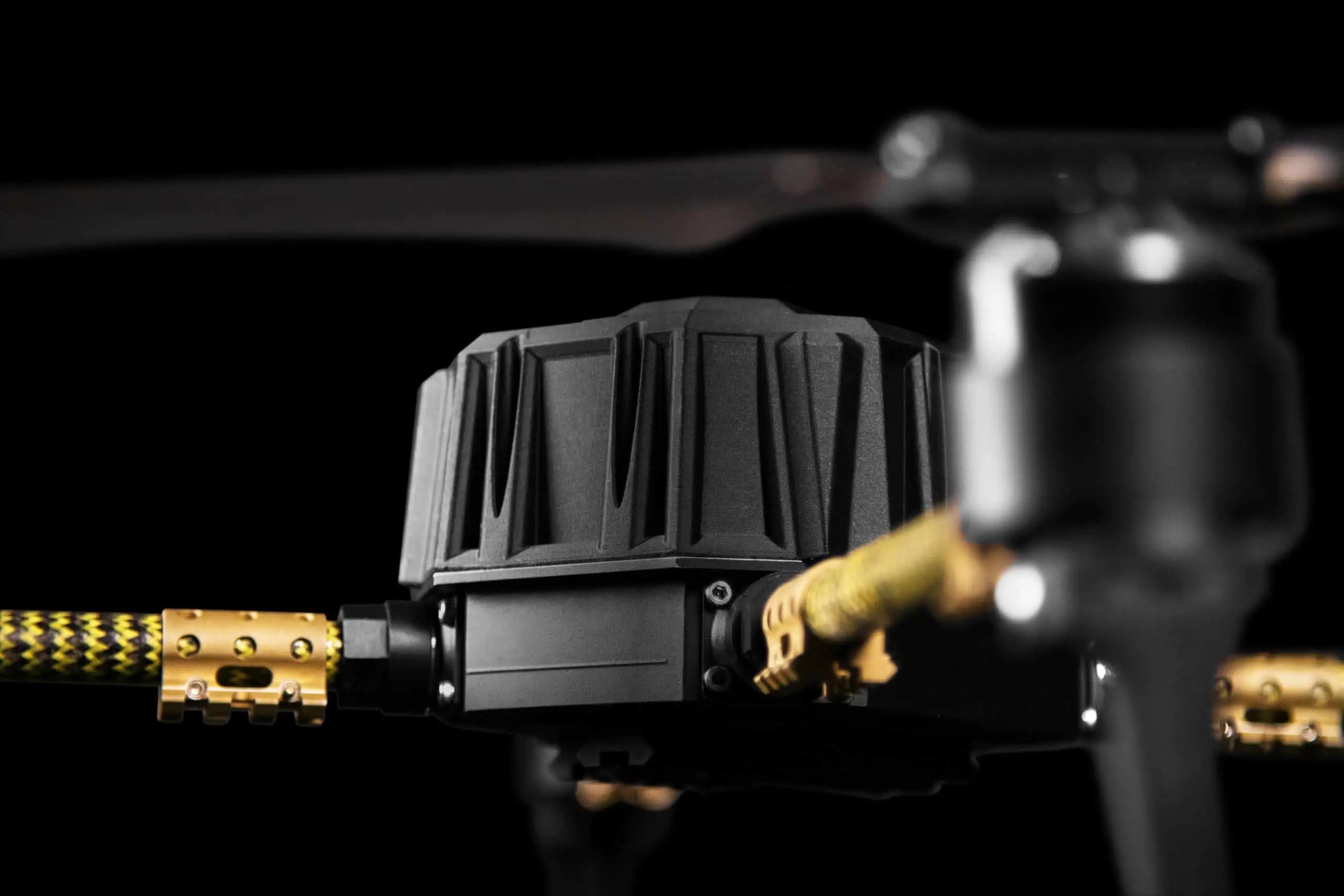Texas company Newcastle Manufacturing is raising the bar for robust quadcopters with an armor-plated drone claiming the ability to shrug off shotgun fire. Consumer drones have become essential gear for both sides in Ukraine, but, as the makers are the first to admit, they are built for a gentle flight in the park, not the rough treatment of military use where equipment is routinely thrown about, dropped, or exposed to shock and vibration.
Manufacturers produce rugged models specifically aimed at the demands of the military market, such as the government’s Blue sUAS initiative for American-made drones, but armoring them is a real step-change.
Built for battle
The drone, known as the Widow, is described as a versatile quadcopter engineered to withstand “highly demanding battlefield conditions.” Its speed of 70 mph also puts it a cut above standard consumer models, and the payload of more than 3 pounds gives plenty of options – in Ukraine, similar-sized drones drop RKG-3 anti-tank grenades.
To address environmental protection, the Widow has an Ingress Protection or IP Rating of 64, which means it is sealed against dust and can withstand water from all directions. It has replaceable accessory mounts and arms that can be straightened out if bent. And while other drones break when trodden on, the Widow can survive being driven over by an ATV and still remain flyable.
But the Widow’s most striking new feature is its armor plating. The makers did not respond to requests for details of the materials used or which parts of the drone are protected, although close-up images give an idea of what the armor looks like. And a YouTube video of a test with a shotgun is claimed to show the drone withstanding a blast from a 12-gauge at 25 yards. The Widow is said to resist smaller gauges at even shorter ranges.
Armored Aircraft Evolution
Many people have suggested shotguns as the ideal solution to drone attacks. Videos show Ukrainian troops engaging incoming drones with shotgun fire, and one Russian blogger advocated a large-scale supply of shotguns to the frontline counter Ukrainian drones. And a shotgun-proof drone is the obvious response – if it is possible.
In fact, this looks like another example of the parallel evolution of drones and crewed aircraft. Both initially started out as unarmed platforms used for reconnaissance, and were soon armed in an improvised fashion; both spent their early days dropping hand grenades. In both, specialized attack aircraft emerged, as did the first awkward air-to-air combat. Like aircraft before them, drones have also evolved into dive bomber and heavy bomber versions. And it now seems that they have an armored version, which parallels the development of ground attack aircraft.
When it became obvious that ground troops would fire at low-level attack aircraft, engineers added protection starting with the Junkers JI (also known as the J4) in 1917, designed to strafe trenches using downward-firing machine guns. Known as the ‘metal monster’, the JI had an aluminum alloy body with steel armor panels to protect the pilot, engine, and fuel tanks. Of over 100 built, only one JI was shot down.
Armored aircraft caught on and by WWII the Russian Il-2 Shturmovik became the new standard; the Germans nicknamed it the ‘concrete aircraft’ because it was so impervious to machinegun fire. Many considered the Shturmovik the most effective ground-attack aircraft of the war and it took a heavy toll on German panzers.
The introduction of jet engines meant that aircraft could fly too fast and too high to be hit by anti-aircraft guns, but the line of heavily-protected ground-attack aircraft which stayed close to the ground and shrugged off ground fire continued with the U.S.A.F.’s celebrated A-10 Warthog and its Russian equivalent, the Su-25 Frogfoot which has seen action in the current conflict.
Drones versus AAA
Newcastle tested the Widow against shotgun fire, but the real question may be how well it can resist shrapnel from anti-aircraft artillery. Mobile anti-aircraft artillery (AAA) weapons like the Flakpanzer Gepard, with its twin 35mm autocannon supplied to Ukraine by Germany, have been hailed as the best defense against small drones. These fire small high-explosive shells, which burst close to the target and produce a spray of metal fragments. A video shows a 35mm autocannon destroying seven out of eight from a swarm of drones with a single burst at 7:06-7:40 – though it helps that the drones are hovering together in a tight group.
One common type of 35mm ammunition produces 325 fragments weighing .15 grams each, another 152 fragments of 3.3. grams – making it similar in size to #12 and #3 shotgun shots respectively. The shrapnel is instantly lethal to small drones made of flimsy plastic and composites but might have little effect on a drone that can withstand a shotgun blast.
Only tests against live ammunition will show whether drones can be effectively armored against airburst anti-aircraft rounds. Protection will not be 100 percent but may be good enough so that a significant proportion of the incoming drones make it through the barrage and carry out their mission. If they can, we may see a new armored attack branch on the drone evolutionary tree. While it looks similar to its unprotected cousin, the armored drone may prove a much more difficult opponent for air defenses, and may make up the first wave of any attack, specifically tasked with taking out the defenders.
Expert Biography
David Hambling is a London-based journalist, author and consultant specializing in defense technology with over 20 years’ experience. He writes for Aviation Week, Forbes, The Economist, New Scientist, Popular Mechanics, WIRED and others. His books include “Weapons Grade: How Modern Warfare Gave Birth to Our High-tech World” (2005) and “Swarm Troopers: How small drones will conquer the world” (2015). He has been closely watching the continued evolution of small military drones.

